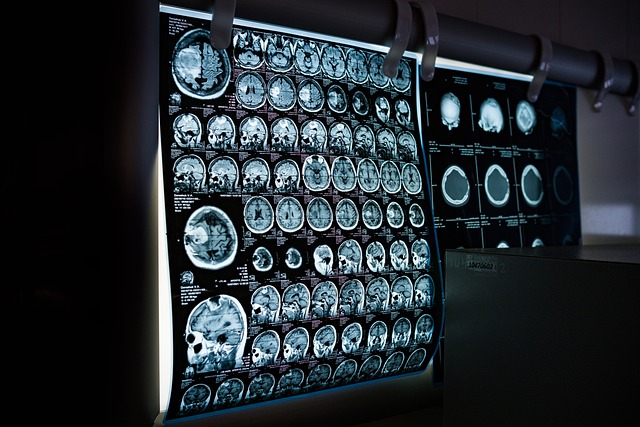7 Early Signs of Parkinson's Disease: Recognizing Symptoms
Parkinson's disease often begins with subtle changes that may go unnoticed for months or even years before a diagnosis. Recognizing the early warning signs can lead to earlier intervention and better management of this progressive neurological condition. Understanding what to look for is the first step toward proper medical evaluation and treatment.

Parkinson’s disease is a progressive neurological disorder that affects movement control and develops gradually over time. While most people associate the condition with visible tremors, there are actually several early indicators that may appear years before the more recognizable symptoms become apparent. Identifying these early warning signs can lead to faster diagnosis, earlier treatment, and potentially better outcomes for those affected. This comprehensive guide explores the early manifestations of Parkinson’s disease and provides information about when to consult a healthcare provider.
Subtle Tremors and Shaking
One of the most recognizable early signs of Parkinson’s disease is tremor, typically beginning in a finger, thumb, or hand while at rest. These tremors often start on one side of the body and may be subtle enough that only the person experiencing them notices initially. The classic “pill-rolling” tremor—where the thumb and forefinger appear to be rolling a small object between them—is particularly characteristic of Parkinson’s. Unlike essential tremor, Parkinson’s tremors usually occur at rest and may temporarily disappear during purposeful movement. Many people dismiss these early tremors as normal signs of aging or stress, potentially delaying diagnosis.
Changes in Handwriting
Micrographia—a sudden change in handwriting where letters become smaller and more crowded together—is a frequently overlooked early indicator of Parkinson’s disease. People with this symptom may notice they have difficulty maintaining consistent letter size when writing, with text becoming progressively smaller across the page. This change occurs because Parkinson’s affects the fine motor control needed for writing. If you or someone you know has experienced a noticeable change in handwriting without explanation, particularly if letters are becoming smaller or more cramped, this could warrant discussion with a healthcare provider.
Loss of Smell
A reduced ability to detect scents (hyposmia) is one of the earliest non-motor symptoms of Parkinson’s disease, sometimes appearing years before motor symptoms develop. Many people with early Parkinson’s report difficulty smelling certain foods like bananas, dill pickles, or licorice. This symptom is often dismissed as a normal part of aging or attributed to congestion from allergies or colds. However, when persistent loss of smell occurs without an obvious cause, it should be considered a potential early warning sign, especially when combined with other symptoms on this parkinson’s disease symptom checklist.
Sleep Disturbances
Disrupted sleep patterns represent another common but often overlooked early sign of Parkinson’s. Specific sleep issues associated with early Parkinson’s include REM sleep behavior disorder (acting out dreams during sleep), insomnia, restless legs syndrome, and excessive daytime sleepiness despite adequate nighttime rest. REM sleep behavior disorder is particularly significant, as studies show it may precede the motor symptoms of Parkinson’s by years or even decades in some patients. People experiencing this disorder physically act out their dreams, sometimes violently, which can result in injury to themselves or sleep partners.
Constipation and Bladder Issues
Gastrointestinal and urinary changes often appear among the early signs of Parkinson’s disease. Persistent constipation without dietary cause may occur years before motor symptoms develop. This happens because Parkinson’s affects the autonomic nervous system, which controls involuntary bodily functions including digestion. Similarly, increased urinary frequency or urgency might appear as an early symptom. While these issues are common in the general population and have many potential causes, they warrant attention when they persist or occur alongside other symptoms mentioned in this parkinson’s disease symptom checklist.
Facial Masking and Voice Changes
A reduction in facial expressions, sometimes called “facial masking” or hypomimia, can be one of the more subtle early signs of Parkinson’s. Family members might notice a loved one’s face appears less animated or expressive, often describing it as a “serious,” “depressed,” or “blank” look even when the person isn’t feeling sad or emotionless. Similarly, voice changes such as speaking more softly, in a monotone, or with less inflection can signal early Parkinson’s. These changes occur because the disease affects the muscles controlling facial expressions and vocal cords.
Stiffness and Slowed Movement
Bradykinesia (slowness of movement) and rigidity are cardinal features of Parkinson’s that may appear gradually. Early manifestations include stiffness that doesn’t go away with movement, reduced arm swing when walking, difficulty getting out of chairs, or general slowness in performing routine activities. Many people initially attribute these changes to normal aging or arthritis. A distinctive characteristic is that the stiffness and slowness typically begin on one side of the body before eventually affecting both sides. This asymmetrical onset is an important diagnostic clue that distinguishes Parkinson’s from other conditions with similar symptoms.
When to See a Doctor
Recognizing parkinson’s early signs is important, but not all symptoms necessarily indicate Parkinson’s disease. Many of these symptoms can be caused by other conditions, medications, or normal aging. However, if you or someone you know is experiencing several of these symptoms, especially if they’re progressively worsening, consulting a neurologist is recommended. Early diagnosis allows for earlier intervention, which may help manage symptoms more effectively.
The diagnostic process typically involves a detailed medical history, neurological examination, and sometimes brain imaging or other tests to rule out conditions that might mimic Parkinson’s. While no single test can definitively diagnose Parkinson’s disease, an experienced neurologist can often make an accurate clinical diagnosis based on symptoms and examination findings.
While Parkinson’s disease cannot currently be cured, various treatments can significantly improve quality of life and help manage symptoms. These include medication therapy, physical therapy, occupational therapy, and in some cases, surgical interventions like deep brain stimulation. The treatment plan is typically tailored to each individual’s specific symptoms and needs.
This article is for informational purposes only and should not be considered medical advice. Please consult a qualified healthcare professional for personalized guidance and treatment.




